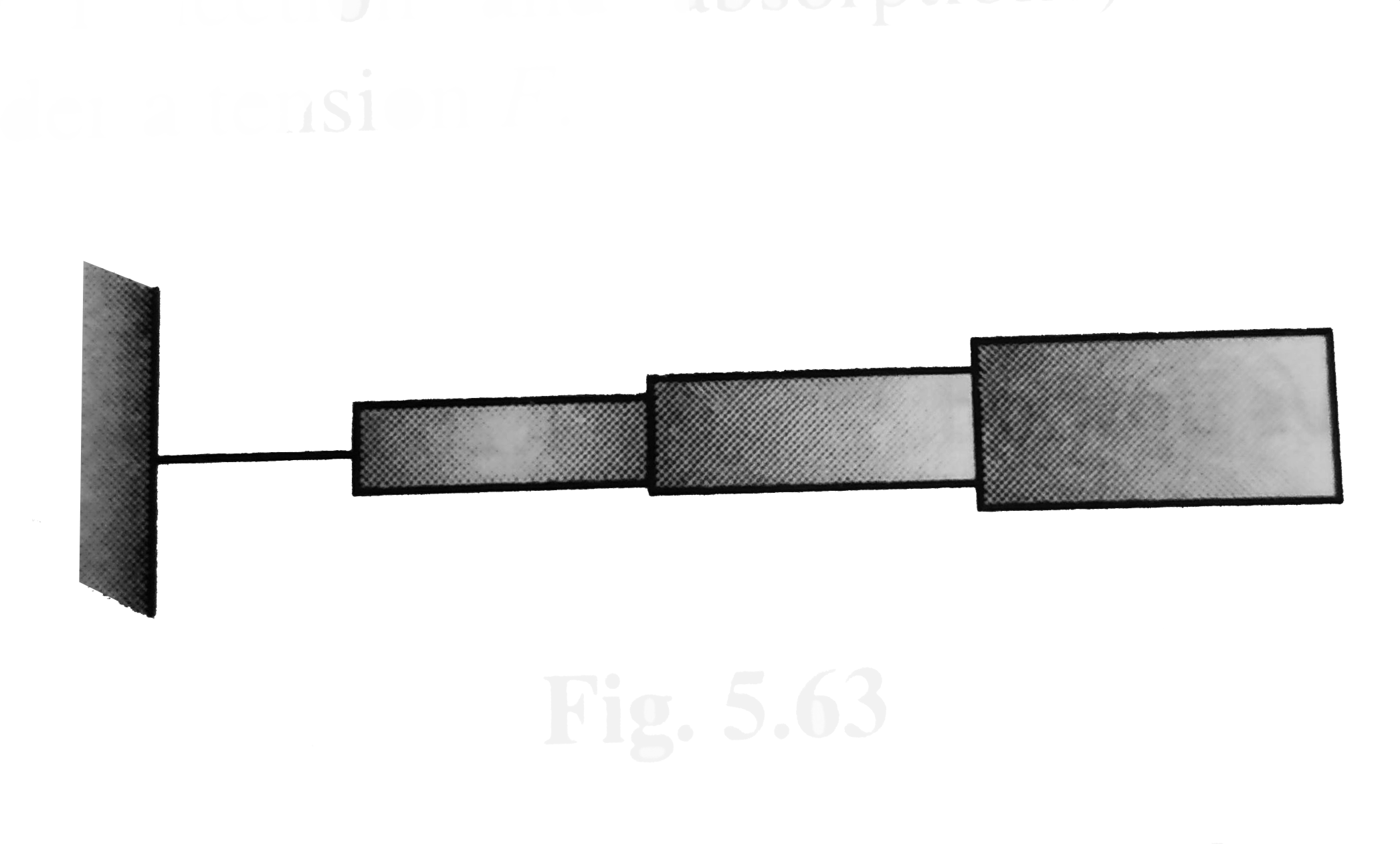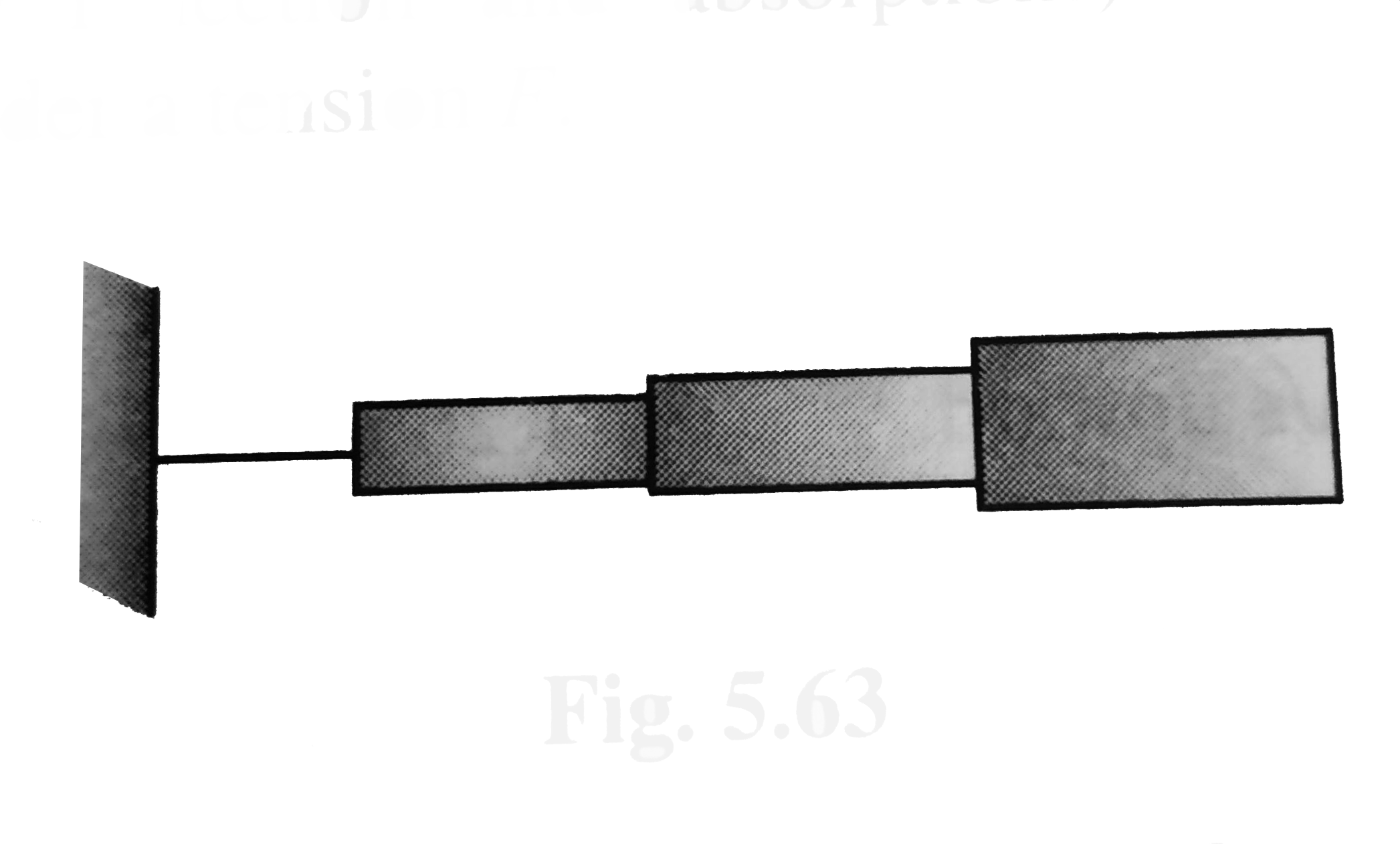A string fixed at both ends has consecutive standing wave modes for which the distances between adjacent nodes are 18 cmand16 cm respectively. The minimum possible length of the string is:
144 cm
204 cm
288 cm
72 cm
The correct Answer is:A
To solve the problem step by step, we will analyze the information given about the standing wave modes on a string fixed at both ends.
Step 1: Understand the Concept of Nodes and Wavelength
In a string fixed at both ends, the ends are nodes. The distance between adjacent nodes corresponds to half the wavelength (λ/2). Therefore, if we know the distance between two adjacent nodes, we can find the wavelength.
Step 2: Identify the Given Distances
We are given two distances between adjacent nodes:
- Distance for the first mode (node 1) = 18 cm
- Distance for the second mode (node 2) = 16 cm
Step 3: Calculate the Wavelengths
Using the relationship that the distance between adjacent nodes is λ/2:
- For the first mode:
λ12=18 cm⟹λ1=36 cm
- For the second mode:
λ22=16 cm⟹λ2=32 cm
Step 4: Establish the Relationship Between Modes
The length of the string L can be expressed in terms of the wavelengths and the mode numbers n1 and n2:
L=n1λ12=n2λ22
This means we can set up the equation:
n1⋅18=n2⋅16
Step 5: Solve for the Ratio of Mode Numbers
Rearranging the equation gives us:
n1n2=1618=89
This indicates that for every 8 nodes in the first mode, there are 9 nodes in the second mode.
Step 6: Assign Values to Mode Numbers
Let:
- n1=8k
- n2=9k
Where k is a common integer factor.
Step 7: Calculate the Length of the String
Substituting n1 and n2 back into the length equation:
L=n1⋅18=8k⋅18=144k cm
L=n2⋅16=9k⋅16=144k cm
Both expressions for L confirm that they are equal.
Step 8: Determine the Minimum Length
To find the minimum possible length of the string, we set k=1:
L=144 cm
Final Answer
The minimum possible length of the string is 144 cm.
In a string fixed at both ends, the ends are nodes. The distance between adjacent nodes corresponds to half the wavelength (λ/2). Therefore, if we know the distance between two adjacent nodes, we can find the wavelength.
We are given two distances between adjacent nodes:
- Distance for the first mode (node 1) = 18 cm
- Distance for the second mode (node 2) = 16 cm
Using the relationship that the distance between adjacent nodes is λ/2:
- For the first mode:
λ12=18 cm⟹λ1=36 cm
- For the second mode:
λ22=16 cm⟹λ2=32 cm
The length of the string L can be expressed in terms of the wavelengths and the mode numbers n1 and n2:
L=n1λ12=n2λ22
This means we can set up the equation:
n1⋅18=n2⋅16
Rearranging the equation gives us:
n1n2=1618=89
This indicates that for every 8 nodes in the first mode, there are 9 nodes in the second mode.
Let:
- n1=8k
- n2=9k
Substituting n1 and n2 back into the length equation:
L=n1⋅18=8k⋅18=144k cm
L=n2⋅16=9k⋅16=144k cm
Both expressions for L confirm that they are equal.
To find the minimum possible length of the string, we set k=1:
L=144 cm
The minimum possible length of the string is 144 cm.
Similar Questions
A string fixed at both ends has consecutive standing wave modes for which the distances between adjacent nodes are 18 cm and 16 cm, respectively.
(a) What is the minimum possible length of the string?
(b) If the tension is 10 N and the linear mass density is 4 g/m, what is the fundamental frequency?
View SolutionA stretched string is fixed at both its ends. Three possible wavelengths of stationary wave patterns that can be set up in the string are 90 cm, 60 cm and 45 cm. the length of the string may be
View Solution
Knowledge Check
A streteched string of length l fixed at both ends can sustain stationary waves of wavelength λ given by
Aλ=n2/2lBλ=l2/2nCλ=2l/nDλ=2lnA string fixed at its both ends vibrates in 5 loops as shown in the figure. The total number of nodes and antinodes are respectively
 A5,6B6,5C7,4D4,7
A5,6B6,5C7,4D4,7
A taut string at both ends viberates in its nth overtone. The distance between adjacent Node and Antinode is found to be 'd'. If the length of the string is L, then
View SolutionThe wave-function for a certain standing wave on a string fixed at both ends is y(x,t)=0.5sin(0.025πx)cos500t where x and y are in centimeters and t is seconds. The shortest possible length of the string is :
View SolutionFour pieces of string of length L are joined end to end to make a long string of length 4L. The linear mass density of the strings are μ,4μ,9μand16μ, respectively. One end of the combined string is tied to a fixed support and a transverse wave has been generated at the other end having frequency f (ignore any reflection and absorption). string has been stretched under a tension F. Find the time taken by wave to reach from source end to fixed end.

View SolutionA string fixed at both ends first oscillates in its fundamental mode then in second harmonic mode.Then match the following.

View SolutionA string is fixed at both ends. The tension in the string and density of the string are accurately known but the length and the radius of cross section of the string are known with some errorl If maximum errors made in the measurements of length and radius are 1% and 0.5% respectively them what is the maximum possible percentage error in the calculation of fundamental frequencyof the that string ?
View SolutionFour pieces of string of length L are joined end to end to make a long string of length 4L. The linear mass density of the strings are μ,4μ,9μand16μ, respectively. One end of the combined string is tied to a fixed support and a transverse wave has been generated at the other end having frequency f (ignore any reflection and absorption). string has been stretched under a tension F.

Find the ratio of wavelength of the wave on four string, starting from right hand side.
View Solution